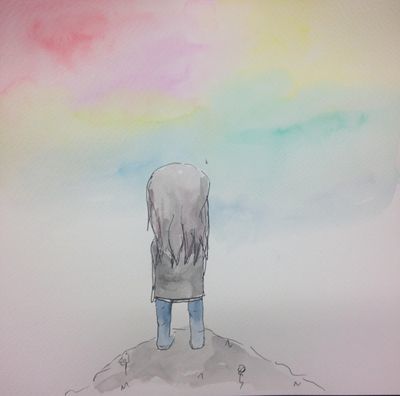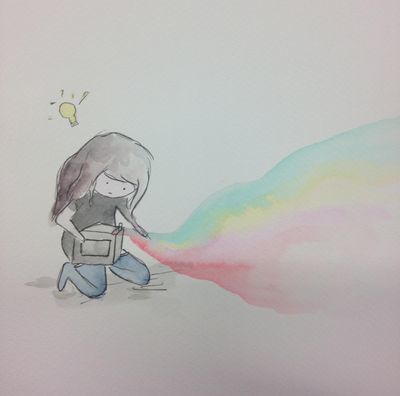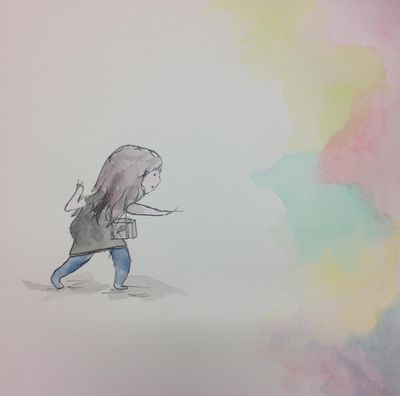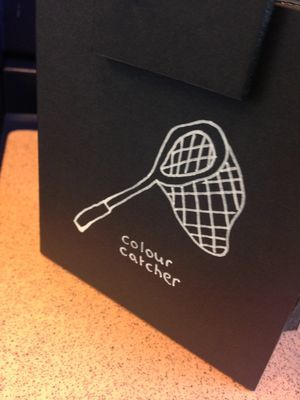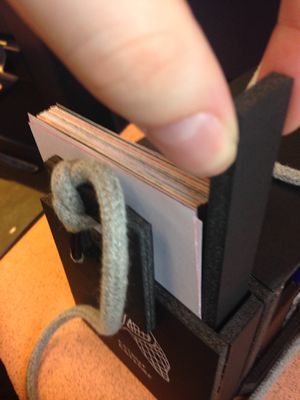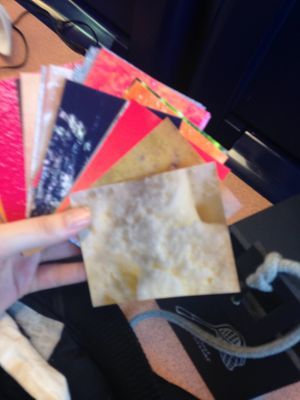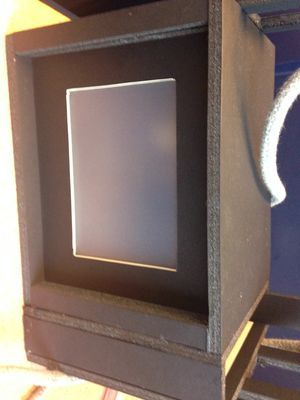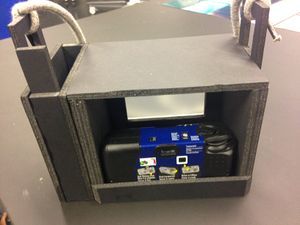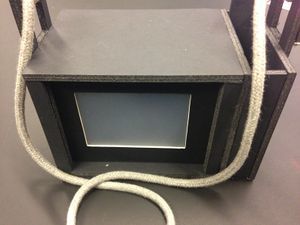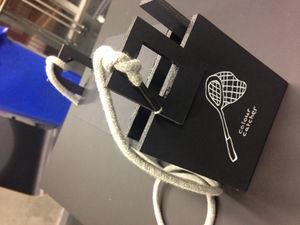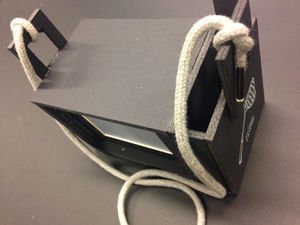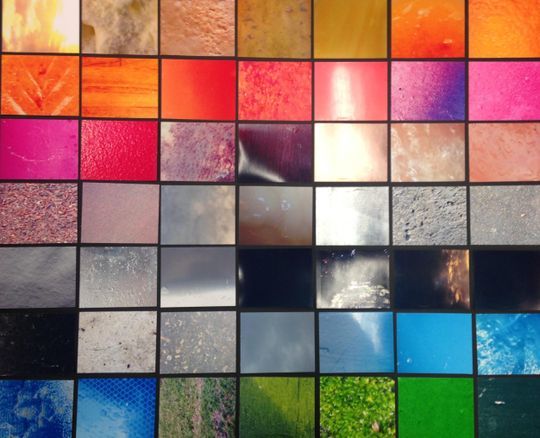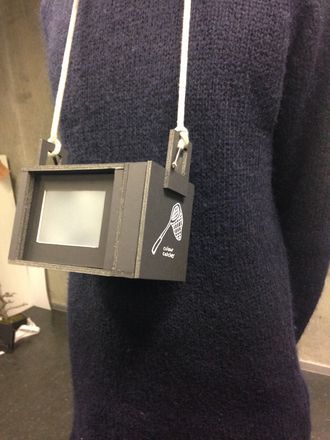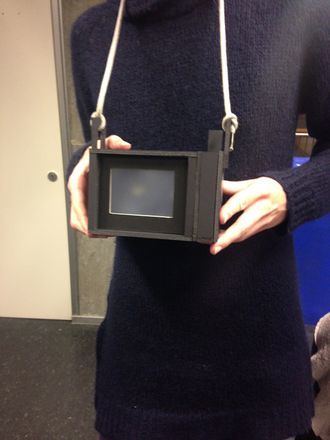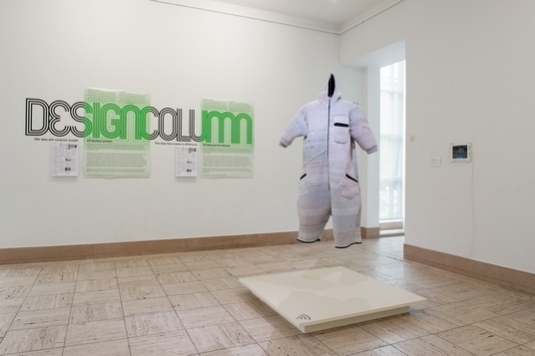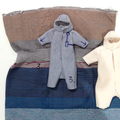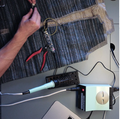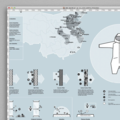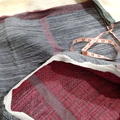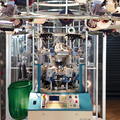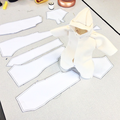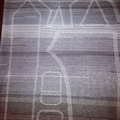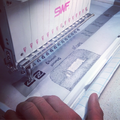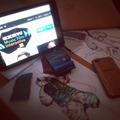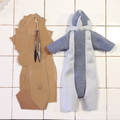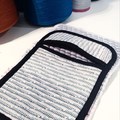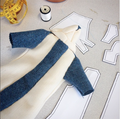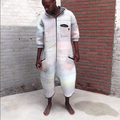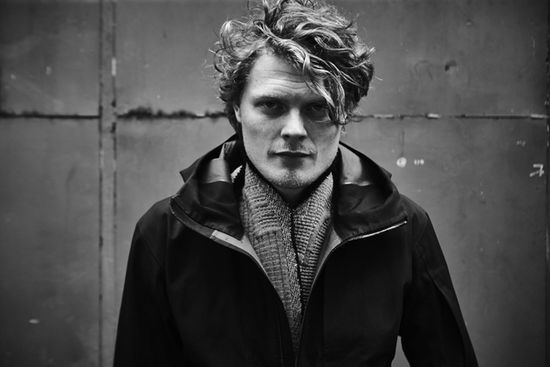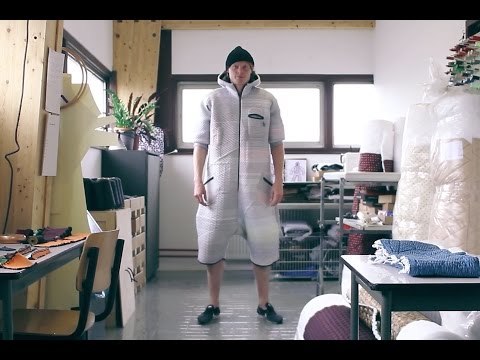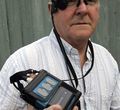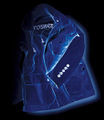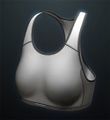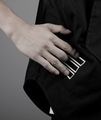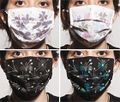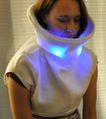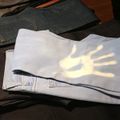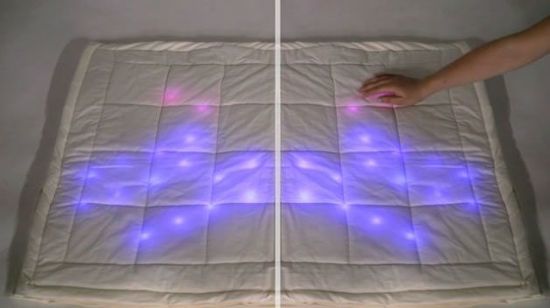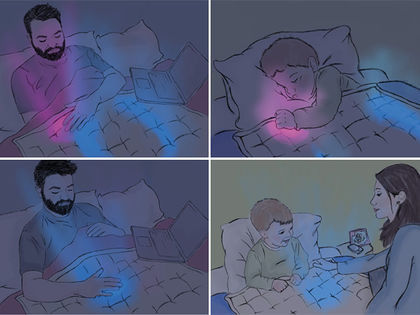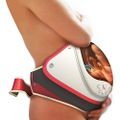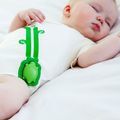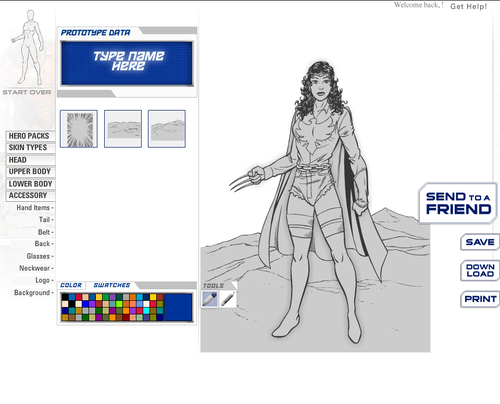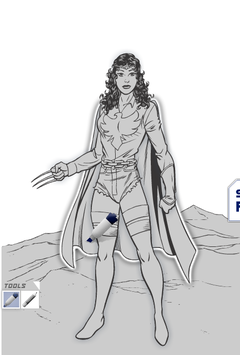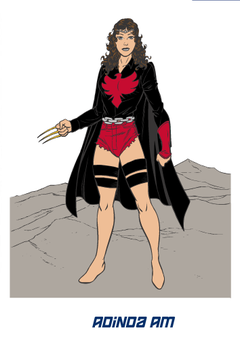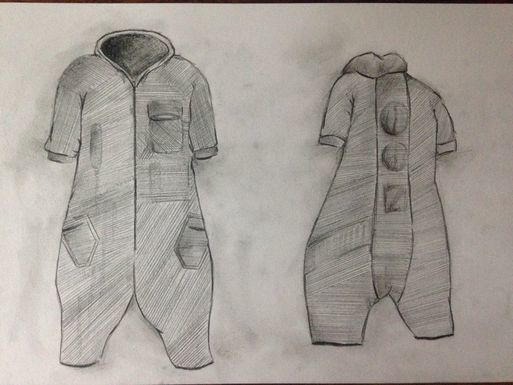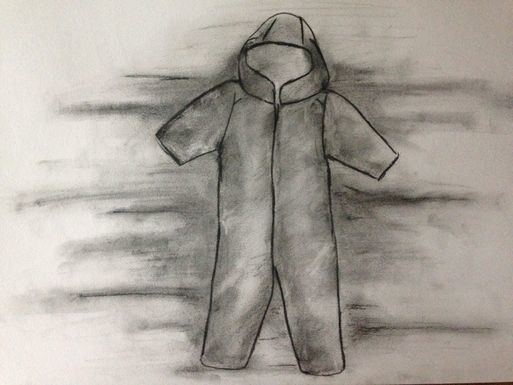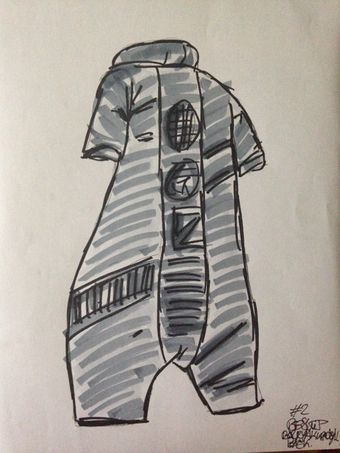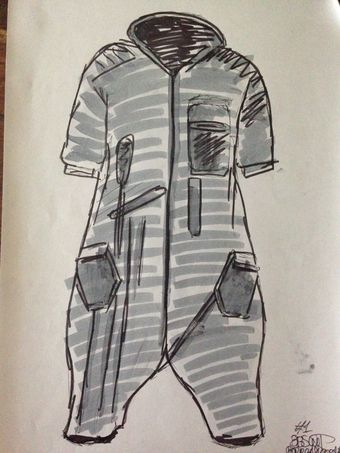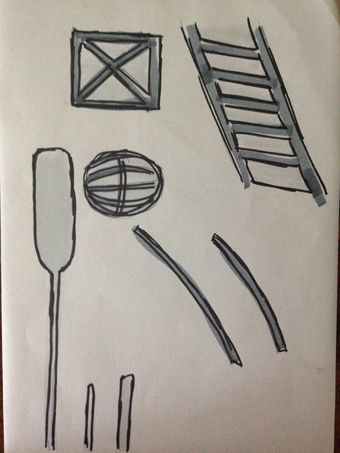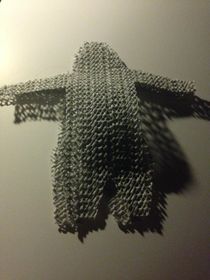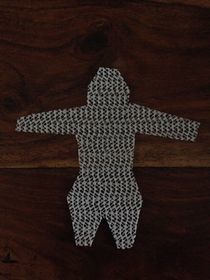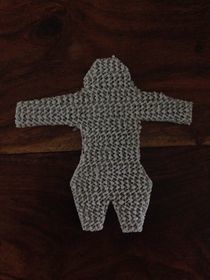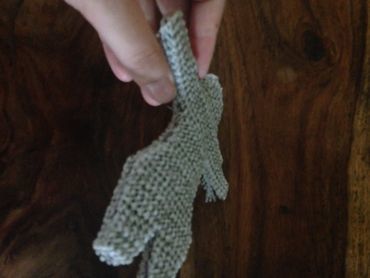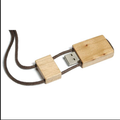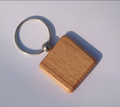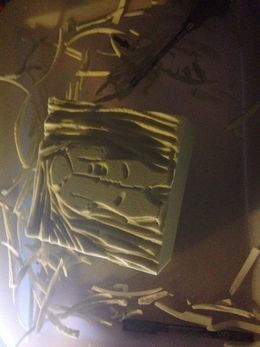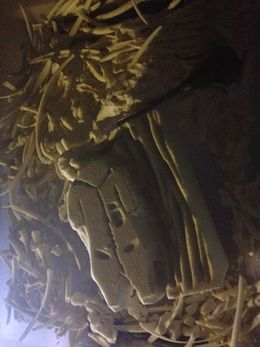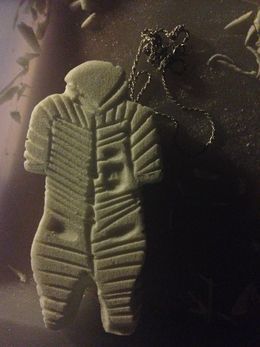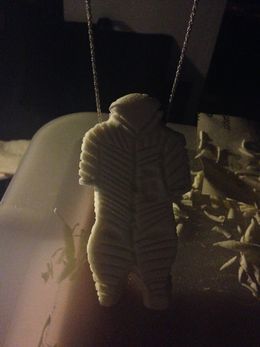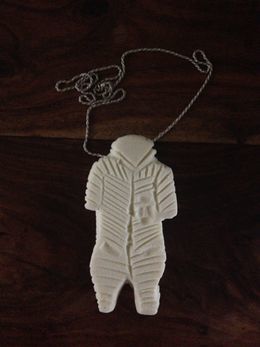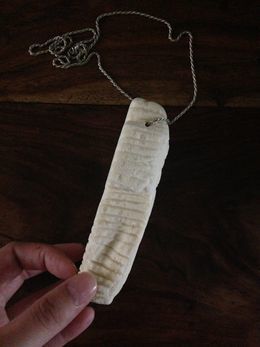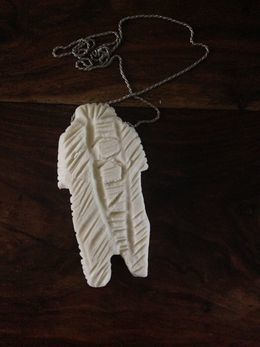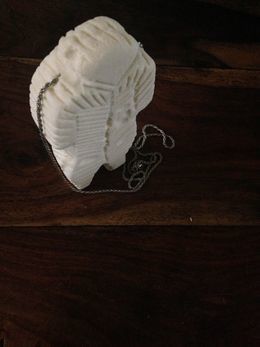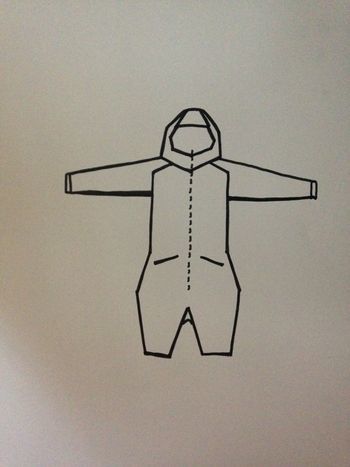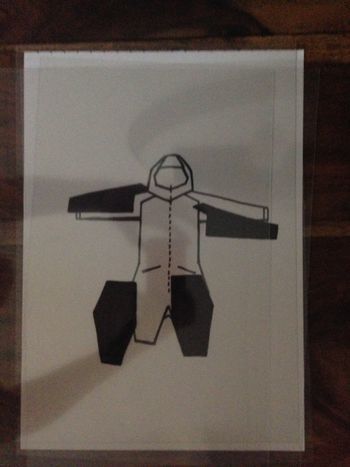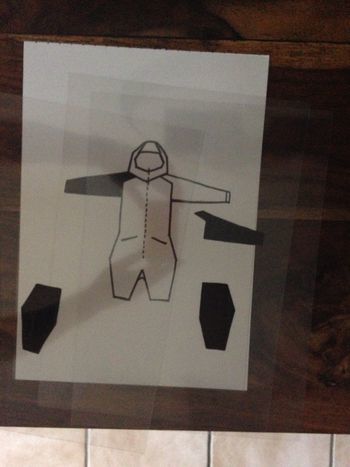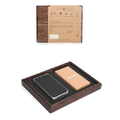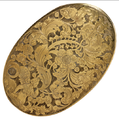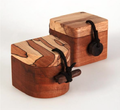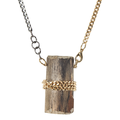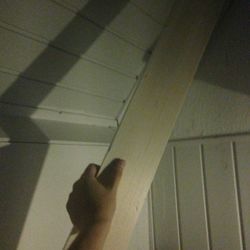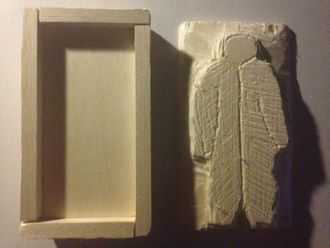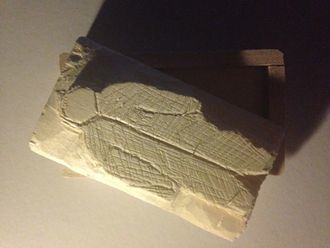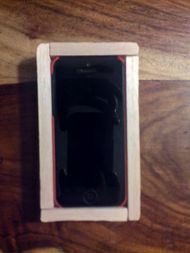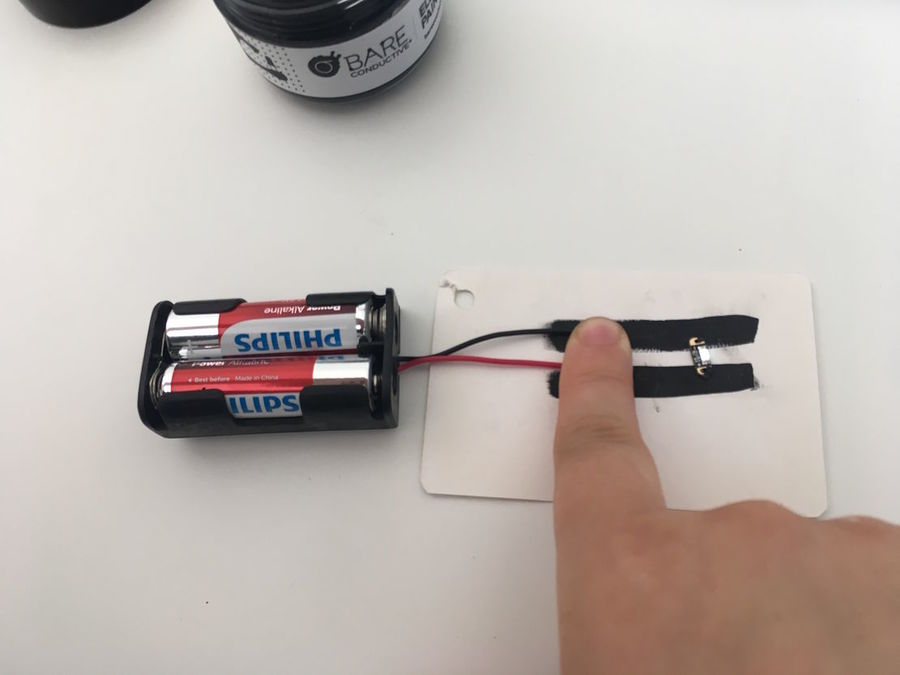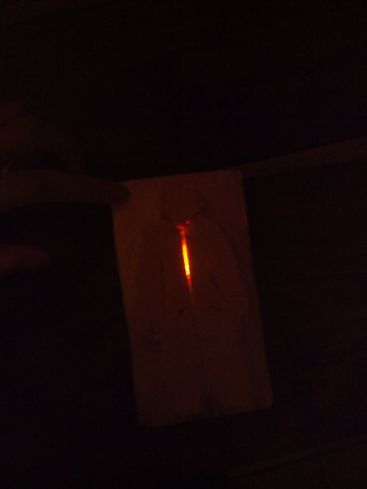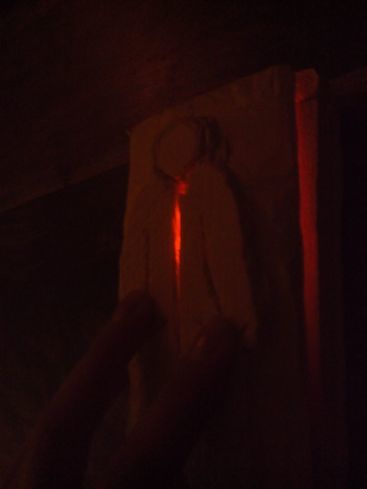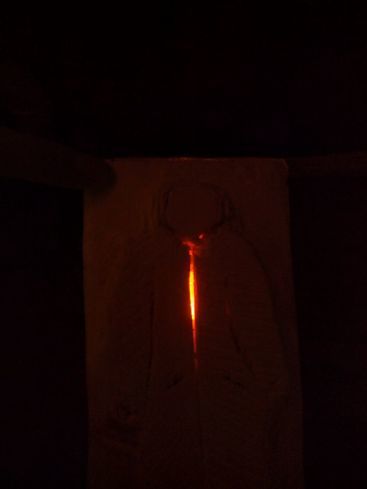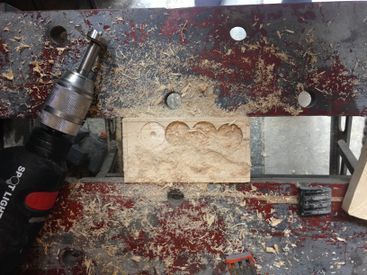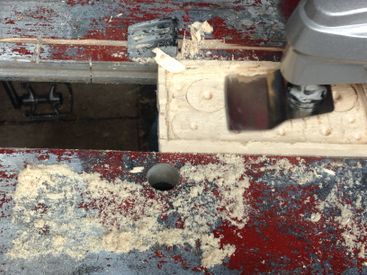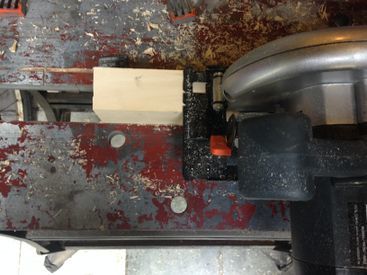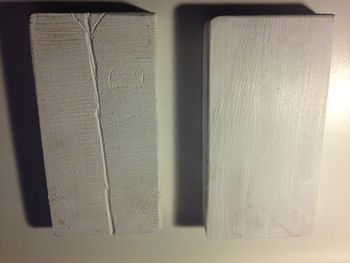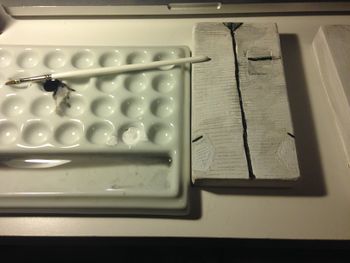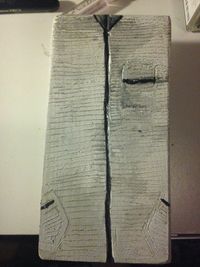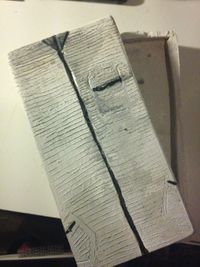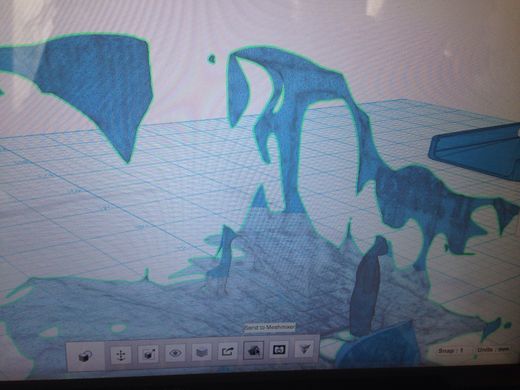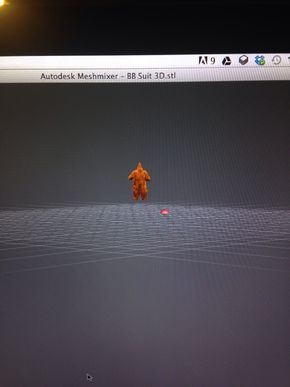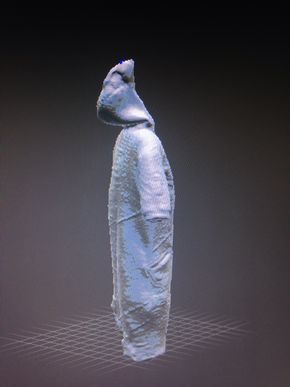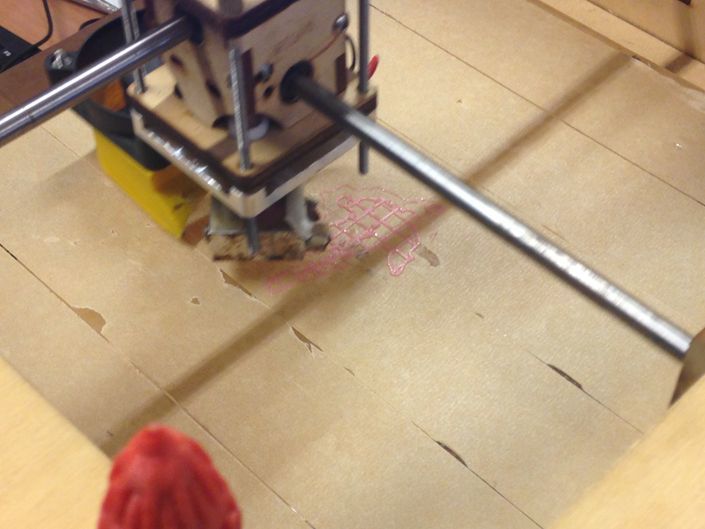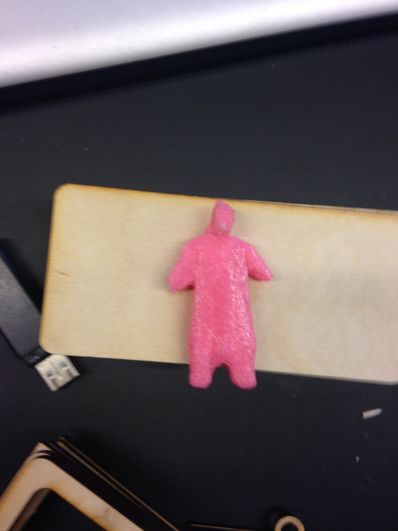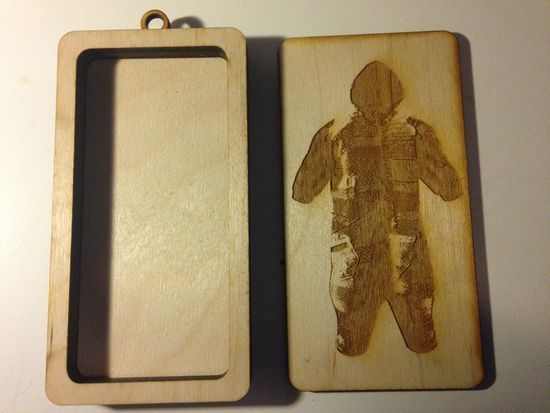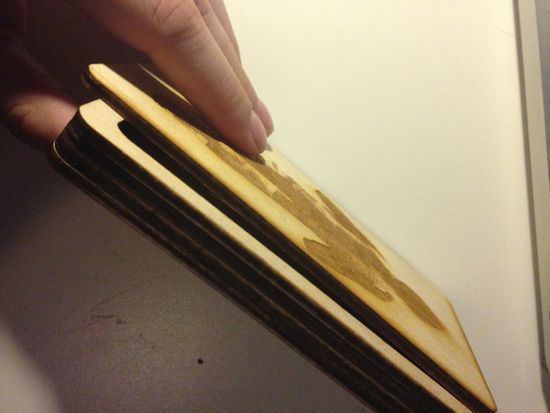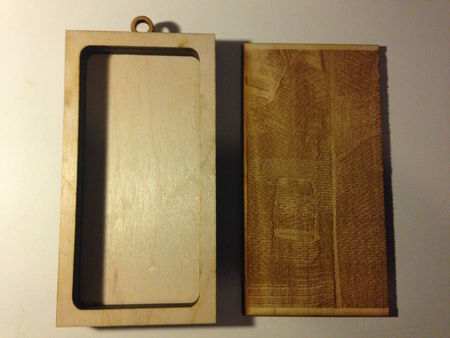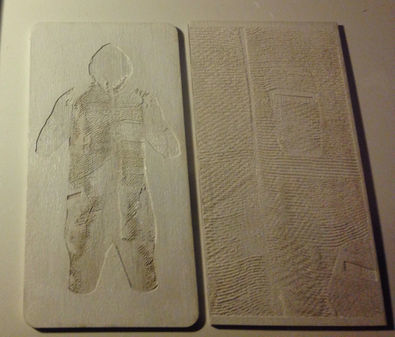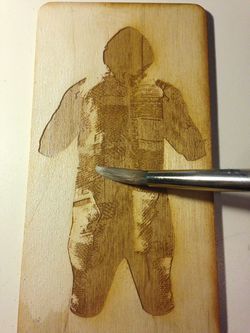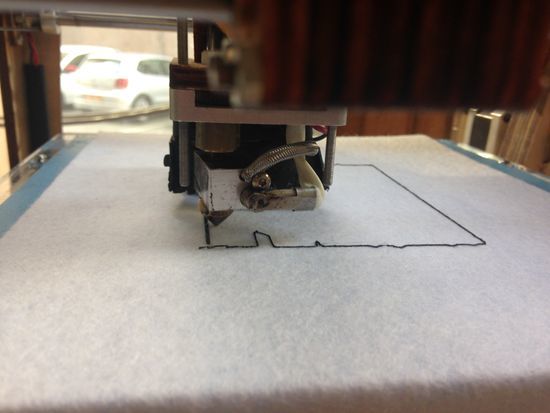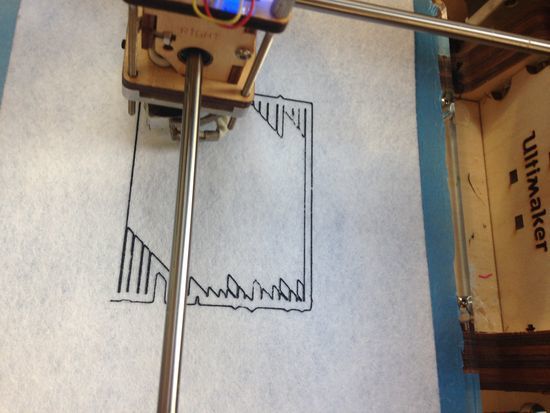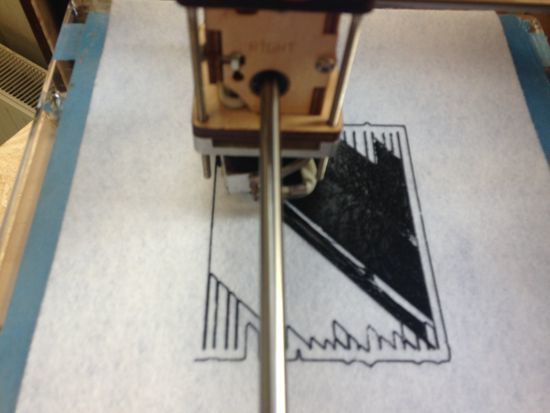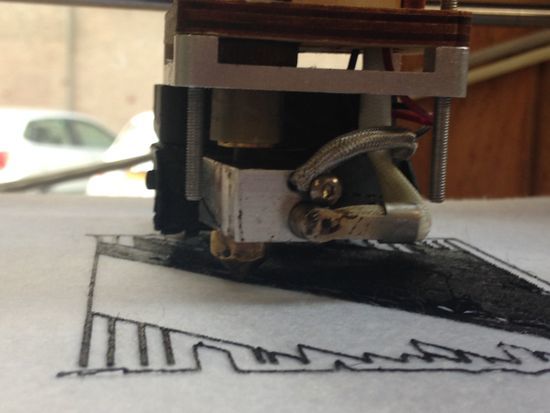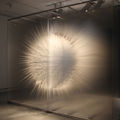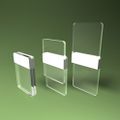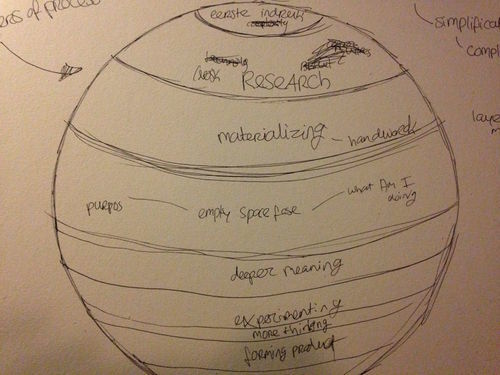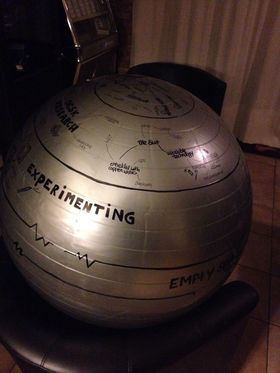User:Adinda.persoon
Tools of the Trade
My main motivation in this project is wanting to work within the practice of creative concepting and its tools. . I want to make a tool that puts objects input into one output. The reason why I want to do this, is because I am interested in finding an other way to create something and am fascinated by accidental art, chain reaction projects and willy wonka.
At first I had a lot of troubles with figuring out what to do with it and keep writing and writing, making thousand of mindmaps. In the meanwhile generating small non specific ideas. Like wanting to make a tool that you can take everywhere with you. That works with different touch sensors, recording this touch and transfer this into something (for example an image, a journal or a timelapse video). A tool that makes it easier to communicate concepts between customers and designers or the other way around. This brought a lot of feedback points at tims class. Like what would make it more critical there are already so many different kind of techniques that do this for us. It might also be interesting to look into techniques that pushes you into one direction. Giving a more artistic statement. After the feedback I was somehow down but motivated because I saw where my mistake layd. I was thinking way too conceptual and logical. Wanting to make a concept that could sell and would be effective for a specific target group.
So I started about something that I could present for the class to express my current state of concept. Eventually I wanted to make a tool that was triggered by action and interacts with the everyday life. Something that could not really be controlled by yourself and gives an unexpected output. I wanted my tool to transparent so everybody can see how it works and get something different out of the everyday life. But quickly I found out that this is a really broad view and I had to be more specific and narrow it down a notch. My presentation for this concept did not went that well and after it I started to brainstorm for some new ideas. I then came to the conclusion that I wanted people to do something themselves or get motivated by someone and then go do it themselves.
Colour Scanner
At the first I started with a plain yet complicated concept of a scanner. For this concept I wrote a new sort of statement to bare my way of thinking and the use of my tool.
Within this minor my goal was to expand my creativity and work methods beyond the digital canvas of my computer. I want to create a medium I can express myself with, that works both digital and analog. I want a tool that makes it possible for me to get inspiration from the daily things. Somehow be able to absorb them and use their patterns and colors in my designs. And the last must have is that my tool should be something that adds something to my thesis proposal where my theme surrounds the creative tools of a visual designer.
The problem with creating a tool for me lays with the fact that there are a lot of ways for a designer to do this kind of things (use pattern/colors from daily things). I just hit google and find hundreds of vector images from people who made several colour combinations. But the difference is that those solutions will just stay on the screen and it wont get a grip of the outside world and its experiences.
The idea to collect colors and patterns could be useful for me and others as a visual designer (or other fields). Because there are so many things hidden in our everyday life. Not as much hidden but we don’t recognize them and even when we do recognize them we tend unconsciously to reset our minds and forget what we’ve seen. I believe these small encounters make our days interesting and rich of inspiration. They should be storaged so we could use them as inspiration when we’re stuck, as a help to expand our internet way of thinking but especially as a reminder that the outside world and your regular routine could be just as exciting.
Concept A portable scanner which you can take with you to scan everything everywhere. The scanner will scan the structure and colour of the thing you scan and transfer it to a database. This database will put all the input it gets from different scanners to 1 colourpattern which a designer works with. So every time someone scans a object the online colourpattern will change. In order to keep a colourpattern or colour you like you must collect it yourself by saving the colourpattern and only getting the locations of where the colours are retrieved.
Sketches
First set up for scenarios
Scene 1. (15 sec. of how your tool came to be) Attributes; computer Surroundings; Inside (designers surrounding), outside (walking)
This scene starts with zooming in on a designer at work, scrolling around through inspirational websites and setting up colour pallets for his design. This daily routine will be fast forward while it is getting dark outside and getting light again. It shows the daily standard and the frustration of the designer with getting stuck in the simple process of colorpicking (hands in hair or something). It also shows that everything the designer does is searching website after website showing a billion of choices with standard colour pallets.
Scene 2. (Reflect on the first 10 years of development of your tool) Scene 2 shows how the designer closes his laptop and gets an idea from his scanner that is on the side of his desk. He takes apart the scanner and develops it so he can take it to the outside world. He starts scanning the things he sees on his way, these are being uploaded to his computer.
Automatically the scanned object where transferred into a database colorpallet for designers. The continues with more and more people using the scanner and the colour pallet changing faster and faster.
The scene ends with the same designer walking with a tablet in his house. With the colour pallet on it on “pause”. With a wink he swipes a colour from the pallet to his wall and the wall turns blue like the sea.
5 significant things, what is its potential - Makes people curious - Make them come out of their comfortzone - Make them a traveler - Expand the way of seeing things - Pay attention to the environment
3 potential users of the tool - Visual web/app designers - Developers (hackers) can use them to alter websites - Designers in general (colour stacks)
Colour
So I was totally into this concept and started to think about the next steps like tackling the problem of scanning. Figuring out how that could be realised. Within the next class I again told my concept, this time to Roel and Tim.
Turned out after some feedback, that I was maybe overthinking it too much. Had it down all a little too specific. After some feedback of Roel and Jon I came to a subject that interested me from the start. And this is colour. Jon and Roel gave me the advice to just research colour, projects about it, concepting ideas with. Just anything to get to know more about colour and its meaning. Like the cultural perspective of colour, the fascinating concept of colour, make it more personal, colour science, signature colours and at last a good remark of Roel, that if I want people to step away from the screen, I shouldn’t make a concept that evolves around a screen.
In general I had to loose it up and do a little more exploring.
Research
Before starting my research I am well aware that the concept colour is huge. And at this point I am not completely sure what I want to research about it. My current knowledge is not big but I also don’t want it to get big. The thing I want to get out of my research is to create a specific point of view about colours that I stand for and can share with others.
Personal Meaning
Communication
Colour Catching
Im fascinated by the envorinment and its bright colours it gives us. To my opinion, colour is something very personal and are interpreted by our perception. With this I also am of the opinion that designers should make their colours more personal. Creating a signature colour. I always study my environment and look out for colours and the patterns in it. After begin stuck about thinking on concepts of how to collect colours. I just made some sketches and from that started to build a “colour collector”. I started to collect colours to see what kind of effect it would have on me and if I would still find it interesting. When I started collecting at first it was very odd to purposely search for colour. But when I got into it, I was super enthousiastic and got into the hundred of different colours and still counting.
Sketches
Prototype
In the box is a simple throw away camera with a passe partout in front of it to take out side images and extra light when taking a photo. When a colour has too much structure a filter can be placed in front of it to blur the vision a little.
Colour Catcher
Beneath a grip of the colours I catched so far.
Research Document
Written Assignment
Introduction
As a 4th year communication and multimedia design student I am very aware of the developments around me. I'm starting to learn more and more about this newer techniques myself. When working with this techniques I became very conscious about opensource software and design. Without really knowing it or realising it I myself became a huge open source consumer. In this written assignment I will take you on a short view of my opinion and worries about this.
Open Designer
The past four years I’ve been educated to be a interaction/visual designer, creative concepter or a developer. This forced me to keep searching for the ultimatie solution for the costumer or myself to extend my profession. With only a computer and paper as a tool to visualise. There is no direct approach but there are some basic guidelines, like receiving the assignment and create a concept which will be reflected on by teachers or customers. So you can work to an end goal stated by the teachers/customers.
The method I use for an incoming assignment is plain simple. I just let the assignment work in on me. I use brainstorms and wordwebs to get to every detail and expand my vision. After that I just start with some prototyping on screen so I have a basic set up which the customer can reflect on. For this I use photoshop, illustrator and several open source programs. There are really no borders for new media technologies you can use as a designers. As a mather affect you have to be the first in something in order to stand out. New media technologies like 3D printing and the constant development of opensource makes it harder and harder to be the first in something as an educated designer. As an example lets go back a few years to a time before the wordpress, wix and other pre-build websites. Where you needed a load of knowledge to make your own website or hire an agency to do it for you. You would sit around the table with the agency to discuss the content of your website and the relevance of this content. Because of this you where aware of the profit your website would give you, which was more than the costs of it. As a result a happy you and a happy agency who satisfied another customer and could pay their bills.
But what happens when a customer can build his own website? Wordpress is one of the big examples of this kind of opensource developements. Wordpress was first released on May 27, 2003, by its founders Matt Mullenweg and Mike Little. Since then the use of wordpress has took 22% of the top 10 million websites as of August 2013. Which means 22% of 10 million websites run on wordpress which is opensource and free to use in a certain way. Ofcourse you have to pay for several themes, and domain space. But you don’t have to pay for a designer or agency. As a future designer I could be a bit worried about this development. Because we keep producing themes and opensource people can buy (for a small amount of money) to start their own business. But on the other hand we as designers want these people as customers to make a website for them. The big question here is, are we destroying our own profession? Breaks opensource the link between intellectual property and value, and doing to designer what the internet did to music and journalism?
I don’t think there is an answer on that yet. But we should keep in mind what our profit can be in this whole development. Because newer technologies are very important to keep up on if you are a designer. Especially with the collactable knowledge of the internet on which your customer can lay hands on. You have to show them that you will always be one step before them. As a future visual designer and creative concepter it is important for me to lay hands on techniques that could support creativity and ideas. And if there’s an opensource network that could help my customers I would recommend it, but only if I see a way that I could benefit from this too. Intelectual property will become more and more important as open source develops itself.
So for my own sake, I will always take care of the knowledge I will spread in the future. And will not put all my cards on the table. There should always be some layers, a customer can only experience when he takes the effort to stand up and knock on my door.
- To be continued and open for discussion
Sources
Wikipedia. (September, 2014). Wordpress. Retrieved from http://en.wikipedia.org/wiki/WordPress
The economist. (November, 2012). Opensource Design Mass Bespoke. Retrieved from http://www.economist.com/blogs/schumpeter/2012/11/open-source-design
Owen W. Brown. (January, 2014). 4 Reasons companies say yes to open source. Retrieved from http://www.computerworld.com/article/2486991/app-development-4-reasons-companies-say-yes-to-open-source.html
Fantastic Forgeries
For this week the assignment was to choose your own Boijmans object and have it thoroughly researched. After some doubts I eventually chose the BB suit by Borre Akkersmans. Well.. not quite true, its not just by Borre. The BB. Suit is a project and a collaberation between ByBorre, Martijn ten Bhomer (TU Delft), Want.nl, 22 tracks & Crisp .
I was attracted to the suit because it was just hanging there in the air, not on the wall or floor. The first time I looked at it, the fabrics and the way it was shaped and made me think it was just a pretty piece of fashion. I was kind of thinking it was a little astronaut like. I then walked away and went on a exploration through the museum. After some wandering I came to the conclusion that I didn’t even know who made the “astronaut like” suit. So I went back and came to a sign of the maker and an iPad. Unfortunately the iPad was behind glass so I wasn’t able to scroll through the contents.
The BB. Suit
When I decided to use the suit for my assignment I came to the conclusion that I had to find out what the suit exactly is. The BB (By Borre) Suit is a suit embedded with copper wires that enable WiFi, GPS, NFC, and Bluetooth, BB.Suit turns its wearer into a mappable hotspot with mp3 streaming ability. Batteries, processor boards, and UI actuators live in the BB.Suit’s pockets, making the rest of the suit feel seamless. The suit also seems to be a little puffy, that’s because it’s made of two layers of cotton to hide and protect the copper cables, with filling that puffs when it’s steamed.
At SXSW, Borre collaborated with 22tracks to showcase the suit’s potential. Festival-goers could upload songs to the BB.Suit and then stream them via its hotspot, making the suit (according to Wired) a “walking URL.” Akkersdijk has only made two prototypes of the BB.Suit so far. Mass production is problematic given the delicate mechanics involved in the design, so Akkersdijk looks to partner with a tech company who will help him develop microprocessors that can withstand daily wear and tear. (The creatorsproject - Ella Riley-Adams, 2014)
On his instagram Borre Akkersdijk placed several photos of the making process of the BB suit. For me this was inspiration to understand the suit a little bit more. I could see a little how the suit was build with pieces, sketches and samples. I loved the fact that I could find all of this on the internet. It shows how open the project is for other people.
The Making proces of the suit (Instagram: http://instagram.com/byborre)
The Maker - Borre Akkersdijk
Borre Akkersdijk is a dutch designer who owns his own fashionlabel ByBorre. He 3D prints complete garments using a hacked circular knitting machine. A big part of his work is recognisable from the Ready-Made collection. The Ready-Made is a collection of materials in basic shapes. It’s a concept that’s all about the production process; a new way of making filled clothing using the production technique that has been used to produce mattresses. Using this technique in a different way makes it possible to create pattern pieces for garments that will come out of the machines filled, thick and with sewing allowance ready to be put together.
100 Images
Because the BB suit is not an old museumal piece it wouldnt be possible to find all kind of ripp offs or immitations of the suit. But I went for a search to related product, people who do the same thing, influences and everything that can be linked back to the BB suit.
Technology and the Future
In order to find the 100 images I first had to do some more digging into the BB suit itself. I went to the Booijmans website to find out why the BB suit was in their collection. I came to the discovery that the BB suit was a part of the Column #8 collection, a collection that changes every three months with a new theme. The theme of this collection is about the extreme developments around drones, transhumanism and ways to experience live. The collection gives a view on how design can let us feel things we couldnt feel before.
“ We use technology to expand our influence on a distant, by using camera’s, Google Earth and drones. Apart from that we also try to make technology a part of our body as much as possible. And although the technology comes close to the skin, it remains an elusive phenomenon for many people. Fewer and fewer people understand how our devices work, and feel the loss of control growing. Every innovation means a new search to balance, an adjustment of our moral compass, a redefinition of our humanity. Design Column #8 “Buiten zinnen” researches what is the question we have to ask ourselfs: the question if we want to have this future and how we want to shape it?” (Boijmans Museum, 2014)
For the first set of images I went to look for futuristic solutions or projects that will be more common every day. The pretender project for example was something that I found to be very interesting. At first it seems similar to the Oculus Rift. But for the pretender project two users are required, one to wear the headset and another to provide the body. While the user with the headset looks around, the other user has an electrical suit that translates the movements of the headset wearer into actions. While the primary objective is to allow someone to experience another perspective, the nature of having your movements manipulated by an electrical current is said to be quite unique. (Deanna Hutchinson - simpublica.com). Not only im real life but also in movies I see the constant development of robotics entering the human body for strength or compensating for lost limbs. It almost seems like we won't be able to live without all of this new developments at some point. We get greedy for all this shiny and new objects and want them to be a part of our live more and more.
Smart Textiles After my foundings on the BB suit, the technology and drones I started at the begining. So I went for a straight research in smart textiles. I’ve never worked with textiles so it was all new information for me. While doing the research I came by some really awesome design and innovative things. As an example a wearable coat that reacts on the surrounding environment. I also came by an inspiring movie about fashion and the future of clothing. In this they talk about using technology and clothing together. For me it was very interesting to watch because I did see some wearable tech clothing but I never really gave it that much thought.
Because the BB suit plays on the fact that the wearer can bond with his surrounding I went to search for things/ technologies that do the same thing. I found some pretty interesting things. For example a quilt that can be used separately but communicates with each other. So when for example a child and a mother are separated, the mother can make a pattern on the cloth and the child will receive the exact same pattern on his own quilt. I really like this idea of playful visual communication from a distance.
Wearable Techs
Next to the smart textiles there are also a big amount of technical equipments that you can add to your clothing or is already added on your clothing. Because the BB suit also has tech in it, I went to search for clothing that also uses tech as an usability for the user or its surrounding.
Superheroes and villains While doing the research to wearable techs and smart textiles my mind went to superheroes. So my hands followed the lead and I was suddenly making my own superhero character on the Marvel website. I’m not quite sure what the relevance is to the BB suit. But the public display of a suit is similar. The suit is a visible thing to show the people to there is something special about them. Also the fabrics en technology used in suits from superheroes and villains and also the bb suit are different and more complex than just standard clothing.
Into the books Because I wanted my images to have some more depth I went to the library to look through some art books. The difference with google and the library is, is that I can just simply grab a book and flip through the pages without having to think about search words. I wanted to look for artist or art that made me think of the suit but had nothing to do with clothing. I had grabbed a book named “OVERS!ZE The Mega Art & Installations”, this booked contained several interviews with artist who make art in public places. Just as the BB suit should be in a public place in order to serve its intentional goal (to connect people through the suit). Besides the "interactive" works I also wanted to compare the suit to other sorts of art like furniture and fashion. I came to some objects that made me think of the original in some sort of way. Similar shapes, form, texture or just appearance.
Processing, Drawing and Experimenting
Drawing the suit
Because I was banned from screen for a while due to a concussion I decided to getting to know the shape of the suit a little better by drawing it and just working with my hands to get to some ideas. I was having some struggles to start my idea float for copying the BB suit. So at first I just started to do a few sketches of the suit. While sketching and processing all of the research I had done and the inspiration I’ve gotten. I came to the conclusion that the suit would get a mini version. A version that should still have the main sharing idea and maybe a few tech specifications.
Because I had no idea what kind of material I wanted to use. I first started to make a prototype of a bathtub cloth.
Experimenting with cloth
While working with the cloth I got the idea that it would be nice that the miniversion was something you could always have with you. I let my mind wander to things you where on your neck and suddenly I had to think of something I saw at the beachhouse a little while ago. A lighter on a string, knotted in a way that the lighter wouldn’t slip out and you would always be able to find it. It was a nice little thing that I wanted to take with me when making a prototype.
Inspirational Images
Prototyping with Curving block
At first I was thinking that my prototype should be one whole thing. But after some brainstorming about the functions/ meaning of my copy. I started to doubt If it would be cool to make parts you could take off and on. I tried a little sketch of this with some transparant sheets. The idea seems pretty nice to me but for my copy I won't use this. It will get a little to far from the original to my opinion. But who knows.. maybe the transformation.
The Copy
Inspirational Images
Shaping the idea After last class and some brainstorming with classmates I came to the idea to make a sort of social token. The token would be some kind of symbol for this days technology overload. The token is actually a box that you could hang around your neck and lock your phone in. The box will automatically block the signals coming from your phone. When hanging the token around your neck you will send a (symbolic) message to the world that you are conscious about this days and the futures technology. And you are willing to lock out this development in social situations and control it. The token will turn on a light when your technology device is "turned in". When first using the token there will be a blueprint of the BB suit in it that will state the ongoing process of development and wearable technology on humans. The token will also have the shape and texture of the suit engraved” The token will be made of wood with some kind of lock in system. As a test I also will be trying to 3D print on fabric as a suggestion from Tim.
Modelling Wood In the weekend I decided to make a quick prototype of my idea to see if it was manageable to make a box and make a light turn on when a phone is entered. And also to figure out how much space I should keep open to put the batteries and LED lights in.
Wood trouble
After making handmade products the whole time, I decided to put some digital work in it. I wanted to use the milling machine to make the token/ phone cover from a solid piece of wood. I wanted to use the milling machine because of the possibility to work big and with thick wood.
3D printing
Laser cutting
The transformation
Printing texture on fabric
Inspirational Images
Layers
Presentation
Set-Up
Text
This past few week I worked on a transformation and a copy of the BB Suit. While I was doing this I became very conceptual and conscious about the making 'process' of products, the layers that are wrapped around them. And the unknown and diverse, complex technology that is used. To explain this whole process and why I chose to use certain kinds of techni
